-
 Bitcoin
Bitcoin $101,898.5005
-0.75% -
 Ethereum
Ethereum $2,258.1125
-1.07% -
 Tether USDt
Tether USDt $1.0004
0.01% -
 XRP
XRP $2.0178
-2.93% -
 BNB
BNB $624.0243
-1.53% -
 Solana
Solana $134.3298
-0.90% -
 USDC
USDC $0.9999
0.01% -
 TRON
TRON $0.2675
-2.05% -
 Dogecoin
Dogecoin $0.1538
-1.96% -
 Cardano
Cardano $0.5482
-1.11% -
 Hyperliquid
Hyperliquid $35.5636
5.45% -
 Bitcoin Cash
Bitcoin Cash $453.4902
-1.66% -
 Sui
Sui $2.5134
-2.97% -
 UNUS SED LEO
UNUS SED LEO $9.1292
1.77% -
 Chainlink
Chainlink $11.8457
-1.60% -
 Stellar
Stellar $0.2312
-2.73% -
 Avalanche
Avalanche $16.9721
0.29% -
 Toncoin
Toncoin $2.7549
-3.82% -
 Shiba Inu
Shiba Inu $0.0...01081
-1.10% -
 Litecoin
Litecoin $80.8250
-0.71% -
 Hedera
Hedera $0.1374
0.21% -
 Monero
Monero $305.4827
-2.36% -
 Ethena USDe
Ethena USDe $1.0006
0.00% -
 Dai
Dai $1.0000
-0.01% -
 Polkadot
Polkadot $3.2085
-3.12% -
 Bitget Token
Bitget Token $4.0845
-3.13% -
 Uniswap
Uniswap $6.3353
-1.63% -
 Pi
Pi $0.5085
-0.70% -
 Pepe
Pepe $0.0...08913
-3.82% -
 Aave
Aave $232.7090
-0.58%
Is the MACD indicator effective in the time-sharing chart? How to use the 5-minute MACD for short-term trading?
The MACD indicator on 5-minute charts helps identify short-term trends in crypto trading, but traders must confirm signals with price action and manage risk effectively.
May 24, 2025 at 08:21 am
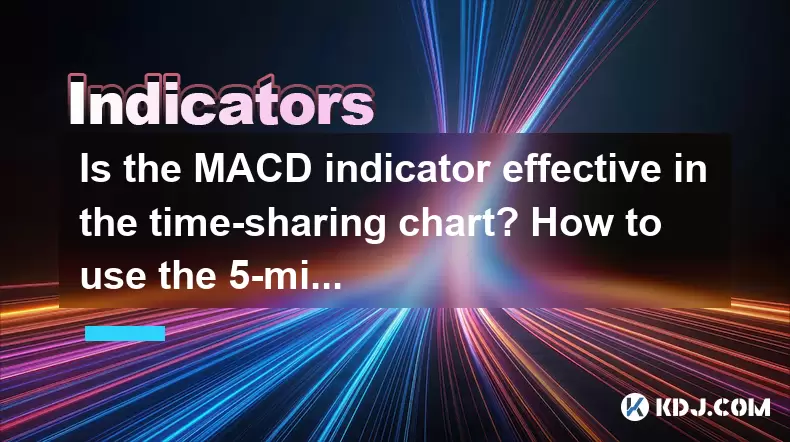
The Moving Average Convergence Divergence (MACD) indicator is a popular tool among traders for identifying potential trend changes and momentum in the cryptocurrency market. When applied to time-sharing charts, particularly the 5-minute chart, the MACD can offer valuable insights for short-term trading. This article will explore the effectiveness of the MACD indicator on time-sharing charts and provide a detailed guide on using the 5-minute MACD for short-term trading in the cryptocurrency market.
Understanding the MACD Indicator
The MACD indicator consists of three components: the MACD line, the signal line, and the histogram. The MACD line is calculated by subtracting the 26-period exponential moving average (EMA) from the 12-period EMA. The signal line is a 9-period EMA of the MACD line. The histogram represents the difference between the MACD line and the signal line, providing a visual representation of the momentum.
When applied to time-sharing charts, the MACD indicator can help traders identify short-term trends and potential reversal points. The effectiveness of the MACD on time-sharing charts depends on the trader's ability to interpret the signals accurately and in the context of the broader market environment.
Effectiveness of MACD on Time-Sharing Charts
The effectiveness of the MACD indicator on time-sharing charts, such as the 5-minute chart, is influenced by several factors. Firstly, the volatility of the cryptocurrency market can lead to more frequent signals on shorter timeframes. This means that the MACD can generate more trading opportunities on a 5-minute chart compared to longer timeframes. However, this also increases the risk of false signals.
Secondly, the liquidity and trading volume of the cryptocurrency being traded can impact the reliability of MACD signals. Higher liquidity and volume tend to result in more reliable signals, as they reflect genuine market movements rather than random fluctuations.
Lastly, the trader's skill and experience in interpreting MACD signals play a crucial role. Experienced traders can better distinguish between genuine trading opportunities and false signals, enhancing the effectiveness of the MACD on time-sharing charts.
Using the 5-Minute MACD for Short-Term Trading
To use the 5-minute MACD for short-term trading in the cryptocurrency market, follow these steps:
Set up the MACD on your trading platform: Most trading platforms allow you to add the MACD indicator to your chart. Select the 5-minute timeframe and apply the default settings (12, 26, 9) for the MACD.
Monitor the MACD line and signal line crossovers: A bullish signal occurs when the MACD line crosses above the signal line, indicating potential upward momentum. Conversely, a bearish signal is generated when the MACD line crosses below the signal line, suggesting potential downward momentum.
Analyze the histogram: The histogram provides additional information about the strength of the momentum. A growing histogram indicates increasing momentum, while a shrinking histogram suggests weakening momentum.
Confirm signals with price action: Always confirm MACD signals with price action on the chart. Look for additional indicators such as candlestick patterns or support and resistance levels to validate the signals.
Set entry and exit points: Based on the MACD signals and price action, determine your entry and exit points. For example, enter a long position when the MACD line crosses above the signal line and the price breaks above a resistance level. Exit the position when the MACD line crosses below the signal line or the price reaches a predetermined target.
Manage risk: Use stop-loss orders to manage your risk. Place a stop-loss order below the entry point for long positions and above the entry point for short positions. Adjust the stop-loss as the trade moves in your favor to lock in profits.
Combining MACD with Other Indicators
To enhance the effectiveness of the 5-minute MACD for short-term trading, consider combining it with other technical indicators. The Relative Strength Index (RSI) can help identify overbought and oversold conditions, providing additional confirmation for MACD signals. Bollinger Bands can be used to identify potential breakouts and volatility, further supporting your trading decisions.
Using RSI with MACD: When the MACD generates a bullish signal, check the RSI to ensure it is not in overbought territory (typically above 70). If the RSI is below 70, it adds confidence to the bullish signal. Conversely, when the MACD generates a bearish signal, ensure the RSI is not in oversold territory (typically below 30) to validate the signal.
Using Bollinger Bands with MACD: When the MACD line crosses above the signal line, look for the price to break above the upper Bollinger Band. This indicates a potential bullish breakout. Similarly, when the MACD line crosses below the signal line, look for the price to break below the lower Bollinger Band, signaling a potential bearish breakout.
Practical Example of Using 5-Minute MACD
Let's consider a practical example of using the 5-minute MACD for short-term trading in the cryptocurrency market. Suppose you are trading Bitcoin (BTC) on a 5-minute chart.
Identify a bullish signal: You notice that the MACD line crosses above the signal line, and the histogram starts to grow. This indicates potential upward momentum.
Confirm with price action: You observe that the price of BTC breaks above a recent resistance level, confirming the bullish signal.
Enter the trade: You enter a long position on BTC at the current market price.
Set stop-loss and target: You place a stop-loss order below the recent support level to manage your risk. You set a target price based on a previous resistance level or a predetermined profit target.
Monitor the trade: As the trade progresses, you monitor the MACD and price action. If the MACD line crosses below the signal line or the price reaches your target, you exit the trade.
Adjust stop-loss: If the trade moves in your favor, you can adjust the stop-loss to lock in profits. For example, you can move the stop-loss to the entry point or a small profit level.
Common Mistakes to Avoid
When using the 5-minute MACD for short-term trading, be aware of common mistakes that can undermine your strategy. Overtrading is a frequent issue, as the 5-minute chart can generate numerous signals. Stick to your trading plan and only take high-probability trades. Ignoring broader market context can also lead to poor trading decisions. Always consider the overall market trend and sentiment when interpreting MACD signals. Failing to manage risk is another critical mistake. Always use stop-loss orders and adhere to proper position sizing to protect your capital.
Frequently Asked Questions
Q: Can the MACD indicator be used effectively on other timeframes besides the 5-minute chart?
A: Yes, the MACD indicator can be used on various timeframes, including 1-minute, 15-minute, 1-hour, and daily charts. The effectiveness of the MACD on different timeframes depends on the trader's strategy and the specific market conditions. Shorter timeframes like the 1-minute chart can provide more frequent signals but are also more prone to false signals, while longer timeframes like the daily chart offer more reliable signals but fewer trading opportunities.
Q: How can I adjust the MACD settings for better results on the 5-minute chart?
A: The default MACD settings (12, 26, 9) are widely used and effective for many traders. However, you can experiment with different settings to suit your trading style. For instance, using a shorter period for the fast EMA (e.g., 8 instead of 12) and the slow EMA (e.g., 20 instead of 26) can make the indicator more responsive to short-term price movements. Conversely, increasing the periods can smooth out the signals but may delay entry and exit points.
Q: Is it necessary to use additional indicators with the MACD on the 5-minute chart?
A: While the MACD can be used as a standalone indicator, combining it with other indicators can enhance its effectiveness. Additional indicators like the RSI and Bollinger Bands can provide further confirmation of MACD signals, reducing the likelihood of false signals and improving the overall accuracy of your trading strategy.
Q: How does the MACD indicator perform during high volatility in the cryptocurrency market?
A: During periods of high volatility, the MACD indicator can generate more frequent signals, which can be both an advantage and a challenge. The increased number of signals can provide more trading opportunities, but it also increases the risk of false signals. Traders should be cautious and use additional confirmation from price action and other indicators to filter out false signals during high volatility.
Disclaimer:info@kdj.com
The information provided is not trading advice. kdj.com does not assume any responsibility for any investments made based on the information provided in this article. Cryptocurrencies are highly volatile and it is highly recommended that you invest with caution after thorough research!
If you believe that the content used on this website infringes your copyright, please contact us immediately (info@kdj.com) and we will delete it promptly.
- Bitcoin Price Wobbles: Crash Watch and Key Support Levels
- 2025-06-23 16:25:12
- Navigating the Crypto Seas: Charting a Course Through Bull Runs and Bear Markets
- 2025-06-23 16:25:12
- BNB Price Check: Stablecoin Surge vs. Prediction Rollercoaster
- 2025-06-23 14:25:12
- Metaplanet's Bitcoin Bonanza: Holdings Skyrocket Amidst Market Swings
- 2025-06-23 14:25:12
- Global Meltdown, Investors, and Safe Havens: Navigating the Storm
- 2025-06-23 14:30:12
- NFT Sales Snapshot: Guild of Heroes, Polygon, and the Market's Shifting Sands
- 2025-06-23 15:25:12
Related knowledge

How much volume is required for the W-bottom to break through the neckline of the time-sharing chart?
Jun 23,2025 at 04:21pm
Understanding the W-Bottom Pattern in Cryptocurrency TradingThe W-bottom pattern is a popular technical analysis formation used by traders to identify potential bullish reversals. It typically appears at the end of a downtrend and resembles the letter 'W' on price charts. In the context of cryptocurrency trading, where volatility is high and trends shif...
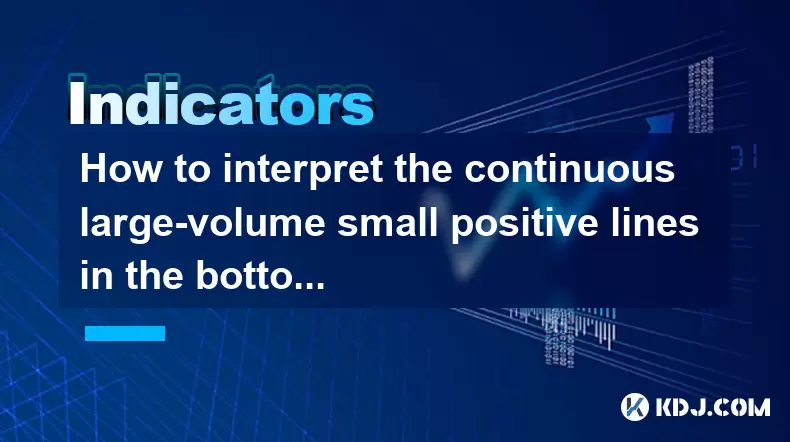
How to interpret the continuous large-volume small positive lines in the bottom area?
Jun 23,2025 at 04:43pm
Understanding the Basics of 'Large-Volume Small Positive Lines'In technical analysis, especially within the cryptocurrency market, the pattern known as 'large-volume small positive lines' refers to a scenario where the price increases slightly (small positive candlestick) but is accompanied by unusually high trading volume. This phenomenon typically occ...

How to read the sideways consolidation after the bottom volume and long positive line?
Jun 23,2025 at 02:28pm
Understanding the Sideways ConsolidationWhen analyzing cryptocurrency charts, sidewards consolidation refers to a phase where prices move within a narrow range without a clear upward or downward trend. This pattern often appears after significant price movements, such as a sharp increase followed by a period of equilibrium between buyers and sellers. In...
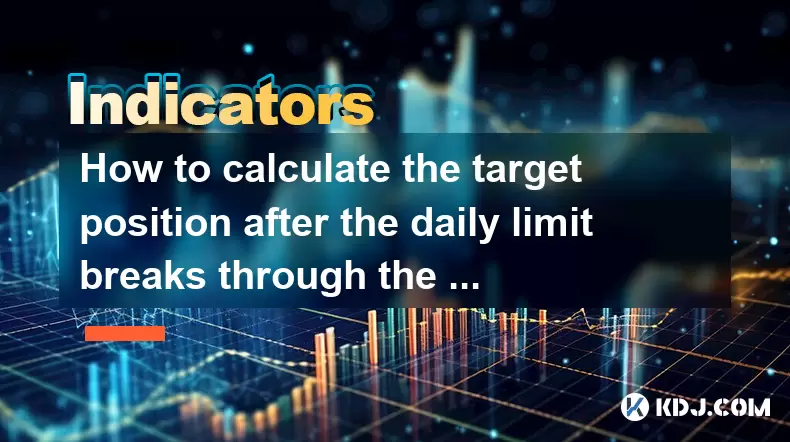
How to calculate the target position after the daily limit breaks through the previous high?
Jun 23,2025 at 02:57pm
Understanding the Daily Limit BreakthroughIn cryptocurrency trading, a daily limit typically refers to the maximum price movement allowed within a single trading day on certain exchanges. When this limit is breached, especially when it surpasses the previous high, traders often seek to calculate the target position or expected price movement following s...
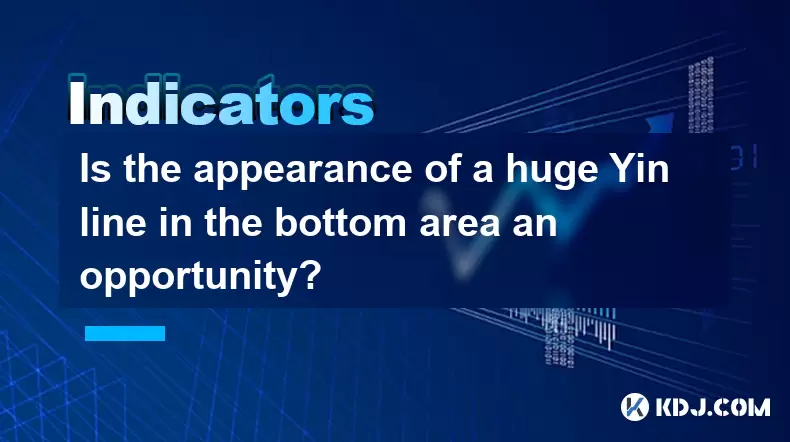
Is the appearance of a huge Yin line in the bottom area an opportunity?
Jun 23,2025 at 04:07pm
Understanding the Meaning of a Huge Yin LineIn technical analysis within the cryptocurrency market, a huge Yin line is often interpreted as a strong bearish signal. It indicates that sellers have dominated the market over a specific period, pushing prices significantly downward. When this occurs in what appears to be a bottom area, traders might questio...
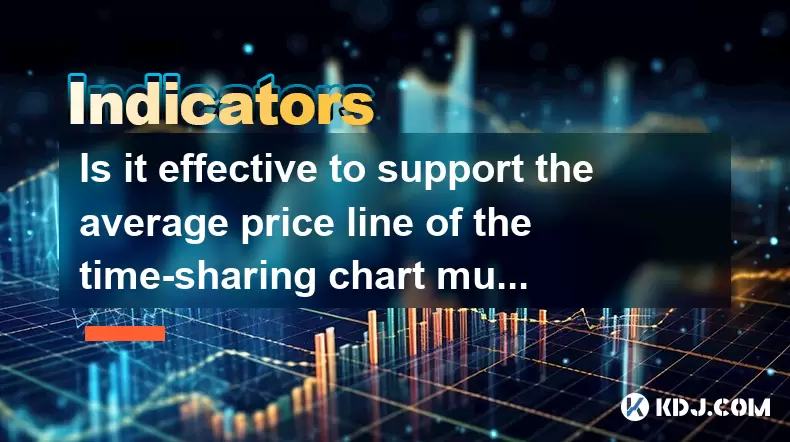
Is it effective to support the average price line of the time-sharing chart multiple times?
Jun 23,2025 at 01:36pm
Understanding the Average Price Line in Time-Sharing ChartsIn cryptocurrency trading, time-sharing charts refer to real-time price charts that display price movements over short intervals, often within a single trading day. Within these charts, the average price line, also known as the Volume Weighted Average Price (VWAP), is a commonly used technical i...

How much volume is required for the W-bottom to break through the neckline of the time-sharing chart?
Jun 23,2025 at 04:21pm
Understanding the W-Bottom Pattern in Cryptocurrency TradingThe W-bottom pattern is a popular technical analysis formation used by traders to identify potential bullish reversals. It typically appears at the end of a downtrend and resembles the letter 'W' on price charts. In the context of cryptocurrency trading, where volatility is high and trends shif...

How to interpret the continuous large-volume small positive lines in the bottom area?
Jun 23,2025 at 04:43pm
Understanding the Basics of 'Large-Volume Small Positive Lines'In technical analysis, especially within the cryptocurrency market, the pattern known as 'large-volume small positive lines' refers to a scenario where the price increases slightly (small positive candlestick) but is accompanied by unusually high trading volume. This phenomenon typically occ...

How to read the sideways consolidation after the bottom volume and long positive line?
Jun 23,2025 at 02:28pm
Understanding the Sideways ConsolidationWhen analyzing cryptocurrency charts, sidewards consolidation refers to a phase where prices move within a narrow range without a clear upward or downward trend. This pattern often appears after significant price movements, such as a sharp increase followed by a period of equilibrium between buyers and sellers. In...

How to calculate the target position after the daily limit breaks through the previous high?
Jun 23,2025 at 02:57pm
Understanding the Daily Limit BreakthroughIn cryptocurrency trading, a daily limit typically refers to the maximum price movement allowed within a single trading day on certain exchanges. When this limit is breached, especially when it surpasses the previous high, traders often seek to calculate the target position or expected price movement following s...

Is the appearance of a huge Yin line in the bottom area an opportunity?
Jun 23,2025 at 04:07pm
Understanding the Meaning of a Huge Yin LineIn technical analysis within the cryptocurrency market, a huge Yin line is often interpreted as a strong bearish signal. It indicates that sellers have dominated the market over a specific period, pushing prices significantly downward. When this occurs in what appears to be a bottom area, traders might questio...

Is it effective to support the average price line of the time-sharing chart multiple times?
Jun 23,2025 at 01:36pm
Understanding the Average Price Line in Time-Sharing ChartsIn cryptocurrency trading, time-sharing charts refer to real-time price charts that display price movements over short intervals, often within a single trading day. Within these charts, the average price line, also known as the Volume Weighted Average Price (VWAP), is a commonly used technical i...
See all articles
























































































